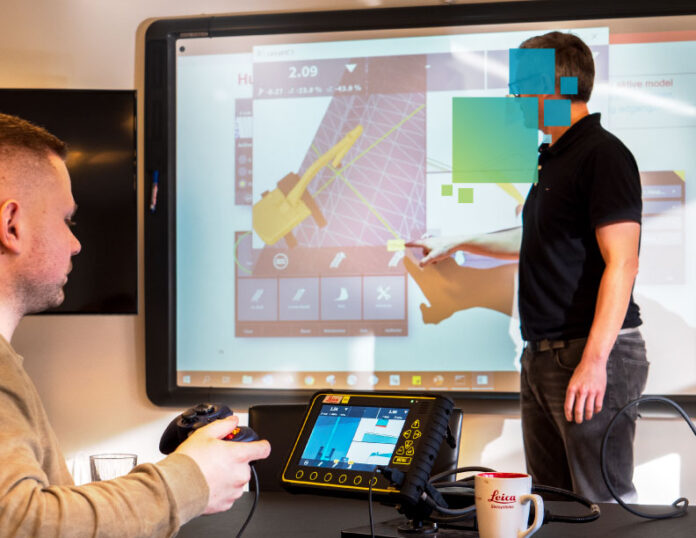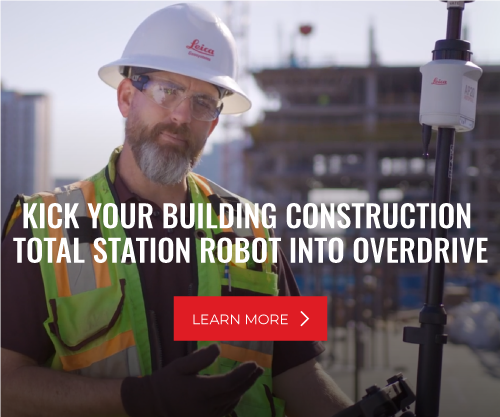When you purchase machine control technology, training should be part of the package. The equipment is robust with software specifically designed for the job, whether you’re sitting in the machine or working in the field. While some machine control technology is easier to learn than others, all technology requires some level of training to optimize proficiency.
Here are five simple steps to help you quickly advance from beginner to pro with machine control.
1. Find your GPS champion
Identifying a GPS champion within your organization is crucial to your success. Once this champion is fully trained to understand both the machine and field aspects of machine control technology, he or she will be a key resource for others in your company.
2. Initial Training: Master the basic functions
The initial training typically starts in a classroom setting and then proceeds to the field, where you’ll apply what you learned in the classroom to practice. Field training will often take place on an actual job and should be scheduled around the job on which you want to begin using machine control.
At the initial training you should learn:
- How machine control improves the construction workflow
- How to use GNSS to reach the desired accuracies using local base stations or network RTK
- How to set up the technology
- How to load files
- How to localize or calibrate a job
- How to engage automation
- How to measure a point
Training can be tailored toward operators, site personnel, or both. Once the initial training is complete, your team will immediately start seeing benefits from machine control technology. As one contractor put it, “I’m just moving the football down the field. I don’t look back. What’s behind me is done, and I know it’s done right. I don’t have to go back and do it again. The money I’m saving by not going backwards on a job is a game changer.”
While the initial training will give your team a good understanding of what needs to be done to get started, intermediate and advanced training can improve your business on many levels.
3. Intermediate Training: Tackle as-builts and more
With intermediate training, you can begin to do work that might have required a surveyor prior to using machine control. In addition to saving money from not hiring a surveyor, you’ll gain efficiency because you’re no longer waiting on the surveyor to complete the work.
In intermediate-level training, you and your team will learn how to capture data for as-built documentation to confirm that the completed site grading and drainage will function as designed. Managing as-built information allows you to share real-time, accurate information on project progress with stakeholders. This is especially important when projects do not match initial plans, either due to implementation issues or challenges encountered during the construction phase. With the right data you can successfully submit a change order to ensure you get paid for the additional work.
Access to your data also ensures you receive payment according to your contract and don’t leave money on the table. One subcontractor realized that a request by the general contractor to move some dirt justified additional charges because the additional burden moved was beyond the scope of the contract.
Another topic that can be covered in intermediate training is how to offset grades horizontally and vertically from surfaces and lines, and how to build simple surface models for machine control using machine control guidance and automation software as well as field software.
4. Advanced Training: Monitor and manage multiple projects remotely
Advanced training is focused on using the technology to monitor and manage multiple projects remotely using real-time data sharing and cloud-based collaboration tools. You’ll learn how to look at the data from many angles. Fleet managers can use the data to allocate machinery to various jobsites based on job-specific needs. Estimators can use the data to improve the accuracy of their bids. And if you are using a real-time safety awareness solution that improves visibility between workers and machines, you can collect data on near misses to improve jobsite safety.
5. Benefit from better results and happier employees
Training and skills development provides many benefits to your organization. As experienced operators retire, machine control allows you to get good results with less experienced operators. Those results are optimized through training.
Additionally, operators that receive training on machine control technology are more likely to feel competent and confident in their job performance, which can lead to increased job satisfaction. This, in turn, can lead to improved productivity, lower turnover rates, and increased job performance.
When evaluating machine control technology, look for a solution that includes training and support from your local dealer as well as additional support directly from the manufacturer in the form of telephone hotlines, web-based support, seminars, videos, and customized training. This will ensure you have multiple ways to get the training you need.
With the right resources and support, you can quickly advance to the top of your machine control game.
To speak to an expert about your machine control training needs, contact us.






